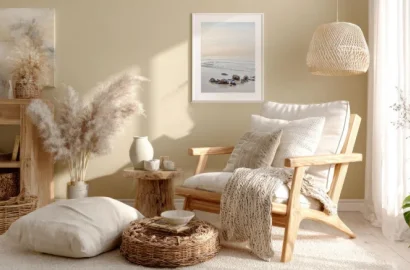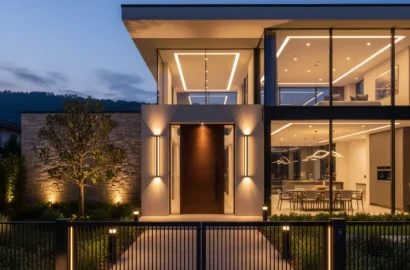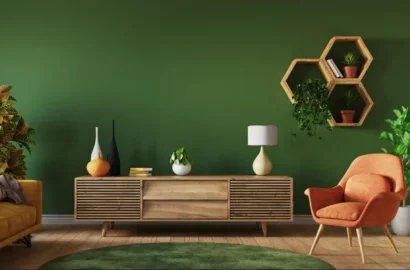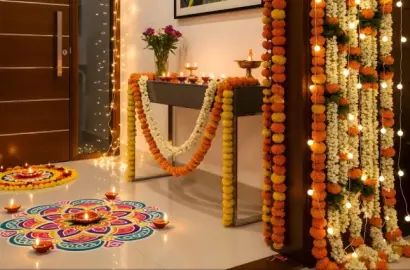Do you want to know more about different interior design careers? In this complete guide, we’ll walk you through some of the key roles in this creative field as well as the skills you need to excel in each.
The field of interior design offers a wide variety of job roles and opportunities for those with the right combination of skills, experience, creativity, and passion. But with so many different job titles out there, how do you know which is the right one for you?
In this guide to interior design careers, we’re going to be running through all of the main roles the industry has to offer, from sustainability interior designer to visual merchandiser and everything in between. We’ll also be letting you know the average salaries you can expect from different roles and outlining what a traditional career path in the field looks like.
Are you ready to find out which role is the best match for your skills and interests? Then read on!
Contents:
- What do interior designers do?
- What skills are needed in the field of interior design?
- Different types of interior design jobs
- What does an interior design career path look like?
- Is it necessary to pursue a course to be an interior designer?
- What are the kinds of courses one can choose to pursue?
- Why a portfolio matters and how you can build one
- How to transition to interior design from other professional fields
What do interior designers do?
An interior designer is someone who creates attractive and functional indoor environments that meet the needs and preferences of the individuals who work or live in them. Interior designers decide how a space will be enhanced, organized, and decorated by following the principles of interior design and by using their extensive knowledge of furniture styles, textiles, accessories, color palettes, and lighting.
Planning and organization is also an important facet of the role and an interior designer will be expected to concept and plan projects, work to budgets, collaborate with contractors and stakeholders, and oversee a design or redesign project from start to end. Finally, depending on the legislation of the country they are working in, an interior designer will also need to ensure that the space they are working in fully complies with accessibility standards and health and safety regulations.
What skills are needed in the field of interior design?
An interior designer requires a broad range of both hard and soft skills. Let’s take a look at what these are.
Soft skills
Creativity
Creativity is a key skill of the interior designer. They use their imagination and creative flair to create aesthetically pleasing and unique spaces for their clients.
Communication skills
Great communication skills are essential in interior design due to the collaborative nature of the industry. An interior designer needs to be able to communicate clearly to ensure everyone is informed about and aligned on a project.
Attention to detail
During the selection and placement of furniture, textiles, and accessories, an interior designer will spend time on the details. This might be through drawing attention to unusual structural features, for example.
Planning, management, and organization
An interior designer is part-creative, part-project manager. The role involves drawing up plans, coordinating timelines, and managing budgets as well as collaborating with clients, contractors, and project stakeholders.
Hard skills
Knowledge of current trends
Interior designers are expected to know about current trends in the field, the latest technology, and sustainable solutions in order to stay relevant and in demand.
Knowledge of sustainable practices
Knowledge of sustainable materials, practices, processes, and technologies is becoming increasingly important in interior design as businesses and individuals seek more environmentally-friendly interior design solutions.
Sketching skills
Sketching skills enable an interior designer to demonstrate and explore ideas at speed with their clients before fully committing to a project or concept.
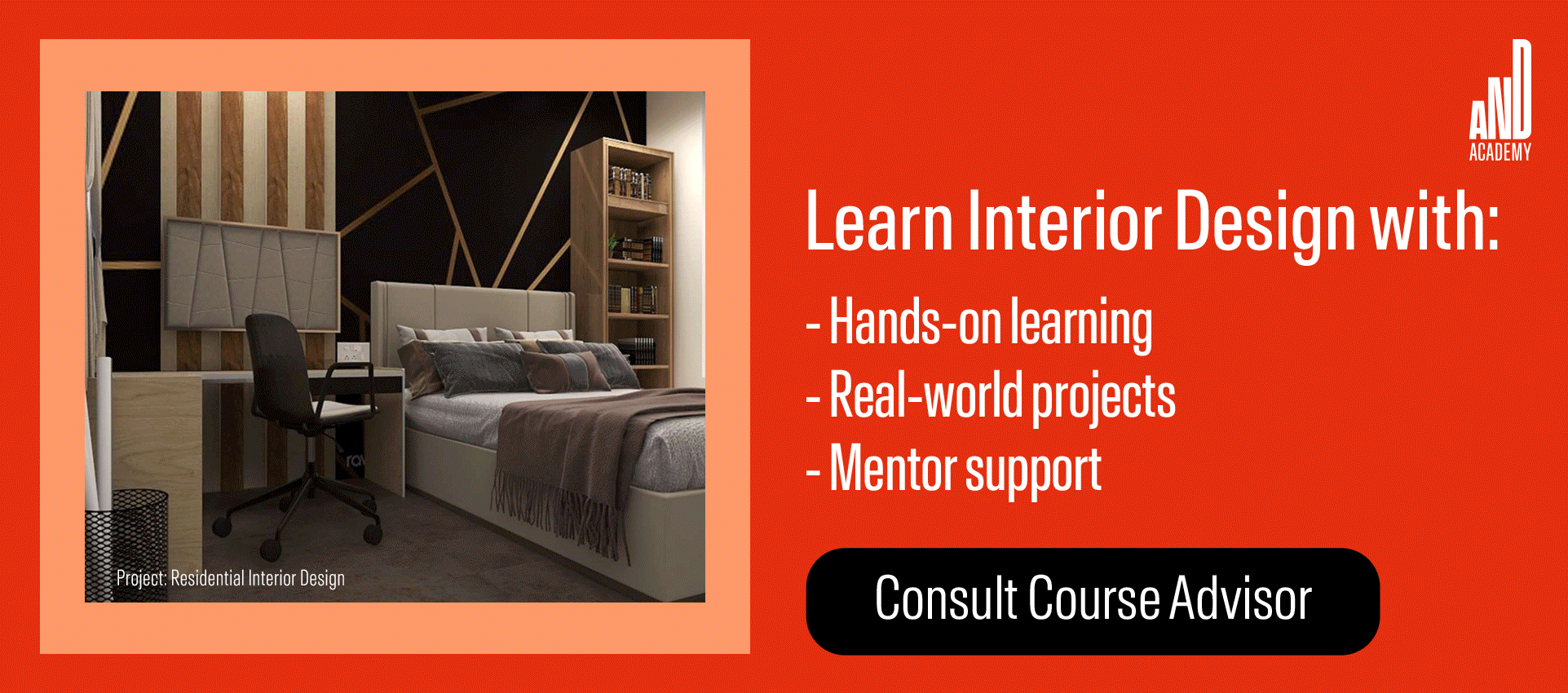
Knowledge of computer-aided design (CAD)
Computer-aided design (CAD) allows interior designers to create, enhance, and share their vision for a project easily.
Knowledge of interior design principles
Every interior designer requires in-depth knowledge of interior design principles. These focus on both aesthetic and functional elements of the practice.

Different types of interior design jobs
Once you’ve completed your education in interior design and have the skills, portfolio, and experience necessary to apply for positions in the field, you’ll want to consider which roles in the industry match your interests, expertise, and desired salary range. In this section, we’ll dive into the details of some of the key roles in interior design so you have all the relevant facts to hand.
Sustainability designer
Sustainability designers, sometimes referred to as sustainability interior designers, work with clients to create functional, attractive spaces that take into consideration environmental factors. In practice, this might include using locally sourced materials, recycling or upcycling furniture or other accessories, or incorporating technologies or systems that help keep C02 emissions down.
Average salary:
- US: $70,788 (Glassdoor)
- India: ₹ 14.6 Lakhs (AmbitionBox)
Healthcare designer
A healthcare designer works with hospitals or clinics to create spaces that are highly functional, accessible, and calming for patients and employees. In this role, the designer uses their knowledge of ergonomics, accessibility legislation, and health and safety regulations to inform their designs, in turn boosting the well-being of patients while ensuring that all design decisions are appropriate for a healthcare setting.
Average salary:
- US: $84,505 (Glassdoor)
- India: ₹7.6 Lakhs (AmbitionBox)
Residential designer
When most of us think of an interior designer, we’re generally thinking of a residential interior designer; that is, someone who works primarily with the homes of private residents. A residential designer might work freelance or for an interior design company, redesigning and renovating different rooms in a house or apartment to create aesthetically pleasing and functional spaces that meet the preferences, needs, and goals of their clients.
Average salary:
- US: $66,030 (Indeed)
- India: ₹3.0 Lakhs (AmbitionBox)
Commercial designer
A commercial designer works closely with businesses on the design of commercial spaces that are used or inhabited by the general public. Working within environments such as fitness studios, shopping centers, and cinemas, commercial designers use their in-depth knowledge of consumer psychology to create spaces in which customers or visitors can seamlessly achieve their goals. An important aspect of this role is the incorporation of a brand’s identity into a space; commercial designers will ensure that a space fully reflects the brand it is representing and is appealing to its core customers.
Average salary:
- US: $51,844 (Zippia)
- India: ₹5.5 Lakhs (AmbitionBox)
Interior decorator
The interior decorator is concerned with the aesthetics of an interior, such as color palettes, furnishings, light fittings, and accessories, and works closely with clients to visually enhance an existing space. In contrast to the interior designer, who must meet functionality and accessibility requirements in addition to aesthetic ones, the interior decorator’s remit is considerably smaller, with their role focusing almost entirely on improving how a particular space looks, rather than how well it functions for the people who use it.
Average salary:
Visual merchandiser
Working with retailers to display products and services to the general public, visual merchandisers use their knowledge of shopper psychology to arrange products in such a way that passersby are compelled to look closer and encouraged to make a purchase. This role combines visual design skills with creative flair, knowledge of consumer psychology, and the experience of how to best utilize a space.
Average salary:
- US: $44,890 (Glassdoor)
- India: ₹3.5 Lakhs (AmbitionBox)
Interior design assistant
An interior design assistant provides support and assistance within an interior design firm or to an individual interior designer. Day-to-day this can involve office administration, the creation of presentations, or the transportation of supplies to a project location. While some interior design assistants will be expected to use computer-aided design (CAD) programs or asked for their opinion on specific interior designs, the role depends greatly on the needs of the individual or company they are supporting and the assistant’s own experience, qualifications, and skillset.
Average salary:
- US: $44,507 (Salary.com)
- India: ₹2.6 Lakhs (AmbitionBox)
Kitchen designer
A kitchen designer is an interior designer who focuses primarily on enhancing the aesthetics and functionality of the kitchen area of a household, working with clients to design kitchens that fully utilize the available space, increase accessibility, and enable inhabitants to easily achieve their goals. A kitchen designer will often seek to coordinate the style of the kitchen with the rest of the residence, incorporate current trends in kitchen design into the space, and build in features that match the client’s personal taste.
Average salary:
- US: $47,805 (Salary.com)
- India: ₹3.3 Lakhs (AmbitionBox)
Lighting designer
Lighting designers work in residential and commercial settings to design and install beautiful lighting plans that enhance existing building structures and interior designs. While skills in visual design and interior design are necessary for this role, it’s usually also required that lighting designers have good knowledge of building and design codes.
Average salary:
- US: $65,229 (PayScale)
- India: ₹ 4.0 Lakhs (AmbitionBox)

What does an interior design career path look like?
Although there’s no hard and fast rule for what an interior design career path should look like, it can be helpful to know the traditional career progression of interior designers. This knowledge can help guide your job applications and give you an idea of what you might expect at each stage in your career. We’ve outlined a traditional interior design career path, from junior interior designer to design firm executive, including average salaries, to help better inform your approach to finding a job.
Junior Interior Designer
The first step on the career ladder for many who wish to work in interior design is to land a position as a junior interior designer. This team member collaborates closely with more senior interior designers and provides assistance with client communication and coordination, project management, documentation, marketing efforts, and other organizational elements of a design project such as ordering furniture and keeping to budgets. Those hoping to apply for a junior interior designer position should ensure they have soft skills in team collaboration, administration, and project management and hard skills in design software such as AutoCAD.
Average salary:
Interior designer
An interior designer is a design professional who works from start to finish on interior design projects for private individuals, companies, state bodies, or institutions. This creative and rewarding role involves consulting with clients, designing beautiful yet functional interiors, collaborating with contractors, monitoring progress, and meeting project deadlines. An interior designer is required to have in-depth knowledge of trends in the field and space planning and be adept at furniture, color palette, lighting, and accessory selection which optimises the space being designed.
Average salary:
- US: $66,298 (Indeed)
- India: ₹ 3.0 Lakhs (AmbitionBox)
Project manager
A project manager is responsible for the planning, budgeting, and execution of projects for an interior design firm. On a day-to-day basis, a project manager will create project plans, collaborate with members of the design team, estimate timelines, budgets, and materials needed, monitor the progress of contractors, and ensure that deadlines are met. Skills needed in this role include time management, leadership, and attention to detail to ensure the smooth running of all projects.
Average salary:
- US: $69,982 (Salary.com)
- India: ₹ 4.5 Lakhs (AmbitionBox)
Senior designer
A senior-level interior designer is responsible for maintaining the project schedule and ensuring all deliverables are met. Their tasks include project conceptualization, development, and execution, managing technical aspects of a design project, and working with other designers on project presentations. A senior designer is expected to be proficient in software such as AutoCAD, 2D/3D software, Photoshop, Illustrator, and InDesign, and hold experience in creating graphic presentations, 3D renderings, and construction drawings.
Average salary:
- US: $86,440 (Glassdoor)
- India: ₹ 5.5 Lakhs (AmbitionBox)
Creative director
Creative directors are highly experienced interior designers who are responsible for delegating design duties among employees within the firm, overseeing projects, contributing to creative strategy, and making critical design decisions. Creative directors are expected to have an in-depth understanding of the design-build process, know how to maintain and manage client-business relationships, and work closely with senior management to promote and perpetuate the design vision and values of the organization.
Average salary:
- US: $192,461 (Glassdoor)
- India: ₹ 24.0 Lakhs (AmbitionBox)
Design firm executive / Studio principal
The studio principal is the most senior position at any interior design firm. In this role, a highly experienced interior designer is expected to establish and communicate the design vision for the company, oversee projects, manage company budgets, generate new business, interact with clients, and be responsible for all hiring and firing of employees. Most design principals will have a bachelor’s degree in interior design, with many completing a more advanced degree in the field as well.
Average salary:
- US: $241,469 (Glassdoor)
- India: ₹ 3.8 Lakhs (AmbitionBox)
Is it necessary to pursue a course to be an interior designer?
Although interior design is not a field that legally requires specific certification or qualifications from those who work in it, it’s highly recommended that those who want to pursue this career undertake some course of learning. This is because to work in the industry you’ll need to have good knowledge of interior design theory, principles, tools, and processes, all of which will be taught during an interior design course. It’ll also be important to get some practical experience before applying for jobs, and many interior design courses offer both hands-on project work and work placements for students to learn the realities of working in the industry. Project work also provides valuable content for the interior design portfolio that students need for job applications and interviews.

What are the kinds of courses one can choose to pursue?
Those who are interested in a career in interior design can choose from university degrees, college classes, and online courses. While a degree from a recognised university will ensure you get a thorough education in interior design, this comes with a hefty price tag and, often, requires a full-time, in-person, multiple-year, commitment. A class at a local college is usually a part-time, in-person option that costs considerably less money than a university degree and may even be subsidized in some areas. Finally, an online course is a great option for those seeking both time and location flexibility while still having the opportunity to onboard the skills, experience, and knowledge needed to excel in the field. Whether you choose a university degree, a college class, or an online course, it’s worth investigating what each course offers in terms of work placement or job support packages, as these can make a significant difference to your success rate when it comes to finding your first role.
Important questions to ask yourself when choosing an interior design qualification:
- Does it offer work placements?
- Is it taught by industry professionals?
- Will you be supported in finding a job?
- Is there a money-back guarantee if you don’t land a job?
- Are you supported in the creation of a professional portfolio?
- How much does it cost?
- Does it offer flexibility in terms of study location and times?
- Does it offer certification?
- Is there an active student community?
- Is there an alumni network?
Why a portfolio matters and how you can build one
An interior design portfolio usually consists of a collection of projects you have worked on and an outline of your skills, experience, and qualifications in the field. This carefully selected body of work is a chance to demonstrate your work processes and personal style as well as showcase your projects using high-res photographs, 3D images, and illustrations. Many interior designers seek to tell the story of each project; what they learned, the challenges they faced, and what the end result was.
Your portfolio matters because how you present these projects will be crucial to landing a job in interior design. It will be the first thing that potential employers and clients will want to browse, and it will support any relevant university or college applications. For these reasons, interior designers and interior design students need to spend time crafting a creative and professional portfolio that clearly demonstrates their skills, passion, and experience. For reference, you can take a look at AND learner Sunali’s interior design portfolio.
To create an interior design portfolio, you’ll need to:
- Build your portfolio website
- Write your About page
- Select and add your favorite interior design projects
- Add your resumé
- QA test, publish, and share
For a full rundown of what you need to do, check out this article we’ve written: How to Create an Interior Design Portfolio That Will Get You Hired (with examples)
How to transition to interior design from other professional fields
Transitioning from another field into interior design is not uncommon for midlife career changers looking for a new challenge, and, while it is useful to have experience in the related area one is shifting to, it’s certainly not a prerequisite for success.
If you are thinking of transitioning into interior design, we’d recommend taking the following steps:
- Do your own research into interior design software, principles, and processes by reading books and blogs, listening to podcasts, and following interior design influencers
- Identify any transferable skills or qualifications from your current or previous career
- Find an interior design course that you can fit around your current commitments
- Hone your skills in your own home or in the homes of family or friends
- Put together a portfolio of the projects you’ve worked on
- Share your work on a social media site, such as Instagram
- Shadow an interior design professional
- Take on freelance gigs, big or small, to build up your experience
- Look for junior positions in the field, or consider setting up your own business
Conclusion
In this complete guide to interior design careers, we’ve looked at the many and varied roles available in this creative and rewarding field. We’ve also outlined the skills needed to succeed as an interior designer, the types of courses available, the importance of portfolios, how to build one, and how to transition from another career into the interior design industry.
If you’d like to find out more about learning interior design skills and building your portfolio, check out AND’s Interior Design Course. In case you need further assistance, here are some resources you can consider:
- Watch this session by Snehanshu Mukherjee, Founding Partner at T.E.A.M and Mansi Almadi, an Interior Designer at Studio Lotus
- Talk to a course advisor to discuss how you can transform your career with one of our courses.
- Check out our Interior Design courses - all courses are taught through live, interactive classes by industry experts.
- Take advantage of the scholarship and funding options that come with our courses to overcome any financial hurdle on the path of your career transformation.
Note: All information and/or data from external sources is believed to be accurate as of the date of publication.




